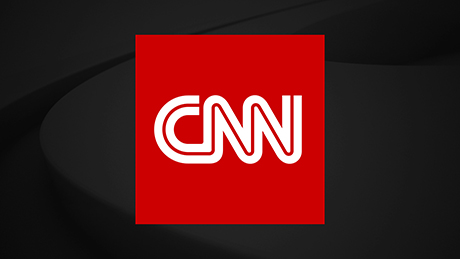CNN —
The race for control of the 50-50 Senate has come down to the wire, with Democrats trying to hold a legislative line of defense as the prospect of a politically divided Washington grows increasingly likely.
Even as the odds of House Democrats keeping their majority worsen – with the party spending millions to defend seats President Joe Biden would have won comfortably in 2020 – the Senate has remained more of a nail-biter. That alone has been encouraging for Democrats, especially amid dour economic news and the president’s low approval ratings, and has renewed debate about whether factors like candidate quality and fundraising can help defy a challenging national environment.
But in a Senate chamber that’s evenly split, with Vice President Kamala Harris holding the tie-breaking vote, Democrats have zero room for error as they look to prevent the GOP from gaining a two-chamber congressional majority and launching even more of the kinds of investigations that Republicans have already pledged to open if they win the House.
Republicans need a net gain of just one seat to win the Senate majority – with Nevada, Georgia, Arizona and New Hampshire among their key pickup opportunities. All of those races have tightened in their favor since the summer, including New Hampshire, which had appeared out of the GOP’s reach when the party nominated a more extreme candidate who had raised just a fraction of Democratic Sen. Maggie Hassan’s millions.
For Republicans to pick up seats, though, they need to defend their own, including two in states Donald Trump won in 2020 but that have required more GOP spending than Republicans would have liked.
While Republicans pummel Democrats over inflation and crime, Democrats’ strategy has been to try to paint contrasts between their candidates and the GOP – over issues of both character and policy, such as their late campaign charge that Republicans would endanger Social Security and Medicare.
In Pennsylvania, for example, where Lt. Gov. John Fetterman is Democrats’ best hope of flipping a GOP-held Senate seat, the Democratic nominee used his closing ad to tout his history of “fighting for people,” while saying that Republican opponent Mehmet Oz has “spent his life taking advantage of people.”
Oz’s struggles with his image – his favorability ratings are underwater in a recent Marist poll, for example – speak to the individual dynamics of Senate races, where some Trump-backed nominees in open-seat contests have struggled to raise money or consolidate Republican support after divisive primaries. The flip side of that equation for Democrats is that some of their vulnerable incumbents have been overperforming Biden in their states in recent polling.
Both of those factors underscore how Senate races can defy the national environment. House races – in which candidates are much less defined – tend to blow with the national winds. The 2018 blue wave, for example – when Democrats made significant gains in the House in response to Trump’s presidency – didn’t translate to the Senate. Republicans were able to pick up seats that year by knocking off some Democrats in red states.
But the question this year is whether the idiosyncrasies of Senate races can outweigh voters’ dismal perceptions of the economy and the desire to check the party in power in the White House. Nearly three-quarters of voters in a recent CNN/SSRS survey said things in the country were going in the wrong direction, with about the same percentage believing the US is already in a recession.
Making things worse for Democrats, Republicans have an enthusiasm advantage, mirroring the partisan gap ahead of the 2010 midterms, when the GOP picked up seats. The Supreme Court’s late June decision overturning Roe v. Wade boosted Democrats’ base enthusiasm, but four months later, it’s still the economy that appears to be motivating most voters, with abortion often falling significantly behind in state polling.
Nevada Sen. Catherine Cortez Masto is widely regarded as the most vulnerable Democratic incumbent as she runs for a second term in a state hard-hit by the Covid-19 pandemic and high gas prices. Democrats are hopeful that voters here, who backed Biden by 2 points, will come home for Cortez Masto in the final stretch, but given the population’s relative transience, that’s no guarantee. This is also the first midterm without Democratic Sen. Harry Reid, who was often instrumental in getting working-class and Latino voters to turnout.
In two states Biden narrowly flipped in 2020, relatively new Democratic incumbents have been campaigning since they won their special elections last cycle and have strong personal brands – and plenty of money to tout them. That initially gave Georgia Sen. Raphael Warnock, the pastor of the late Martin Luther King Jr.’s church, and Arizona Sen. Mark Kelly, a retired astronaut, an advantage over Trump-backed challengers.
Both Arizona and Georgia, however, are used to voting Republican and concerns about the economy are increasing Democratic headwinds. GOP Senate hopefuls may also be able to ride the coattails of stronger gubernatorial nominees in both states. In Georgia, Republican Senate nominee Herschel Walker is well known as a former football star, but he could also benefit from voters pulling the lever for Gov. Brian Kemp, who’s been running ahead of Democrat Stacey Abrams in a rematch from four years ago.
The number of Senate seats Republicans need to pick up increases if they lose any of their own. Chief among those at risk is Pennsylvania, which has dominated CNN’s rankings of the 10 seats most likely to flip for the entire cycle. The presence of Biden, along with former Presidents Barack Obama and Donald Trump, in Pennsylvania on Saturday underscored just how important the commonwealth – which voted for all three presidents at different points – is as a 2022 (and 2024) battleground.
Along with Pennsylvania, the other Biden-won state where Republicans are on defense is Wisconsin. GOP Sen. Ron Johnson, who broke his term limits pledge to run for a third term, has long been the most vulnerable GOP incumbent running for reelection. It’s increasingly rare for states to back presidential and Senate candidates from different parties, but that race seems to have moved in Johnson’s favor since the summer as outside groups have attacked his Democratic challenger throughout the fall.
Republicans also need to hold North Carolina and Ohio – two states that have remained surprisingly competitive for Democrats in a national environment that favors the GOP. North Carolina is a purple state that Biden narrowly lost, so tight margins are to be expected here. Democrat Cheri Beasley, who could be the state’s first Black senator, has been running as an outsider by casting GOP Rep. Ted Budd as a creature of Washington.
Ohio is a different story. Although it has one Democratic senator, the state – which Trump twice carried by about 8 points – has been trending increasingly red. Republican J.D. Vance, who won a nasty primary with Trump’s backing, has struggled with fundraising – so much so that the most powerful Senate GOP super PAC had to divert resources from battleground states to shore up what has become an increasingly red state. Democratic Rep. Tim Ryan was able to dominate the airwaves early with spots that tout his bipartisan bona fides. His closing ad, for example, spotlights his 2016 vote against Nancy Pelosi for speaker.
Ryan’s fundraising advantage has also underscored a hard truth for Republicans this cycle – despite their millions of super PAC dollars, candidates who can’t raise money are still a problem. That’s because candidates get more favorable advertising rates than outside groups on TV.
And yet, if the national environment is the most important factor Tuesday night – and well-funded Democratic incumbents in top-tier seats go down – Republicans could also be zeroing in on races such as Colorado and Washington state, which Biden carried by about 13 points and 19 points, respectively.







 English (US) ·
English (US) ·